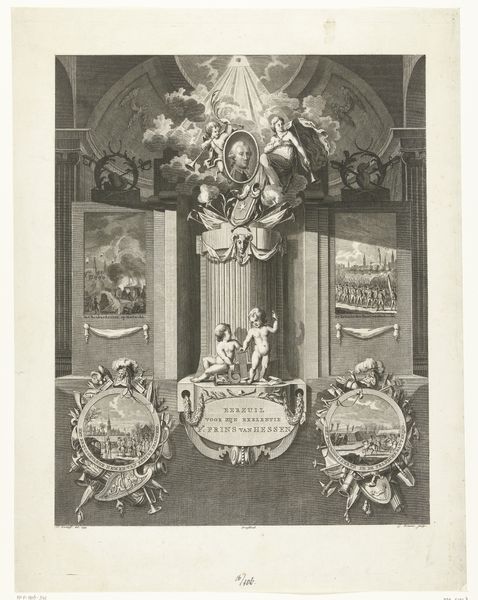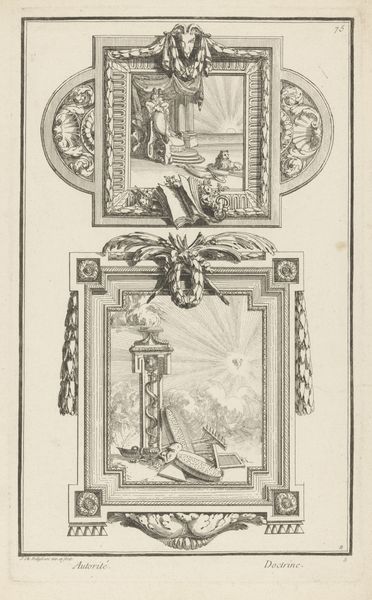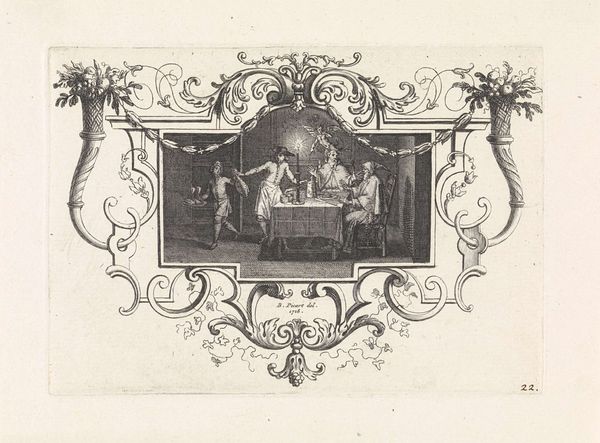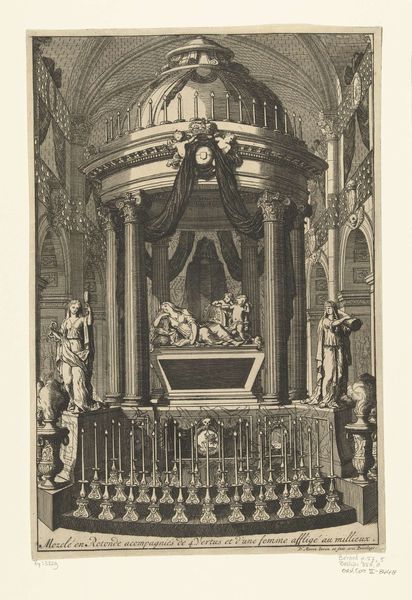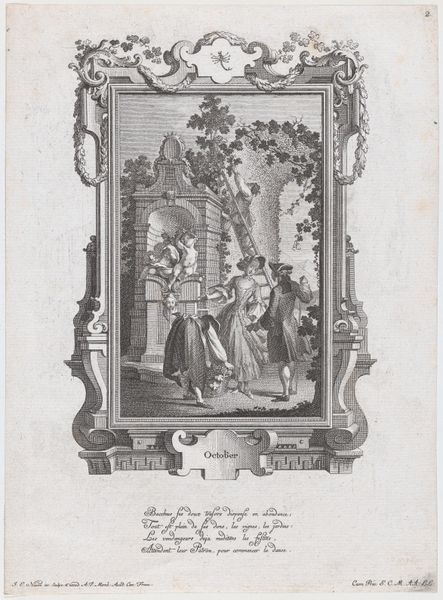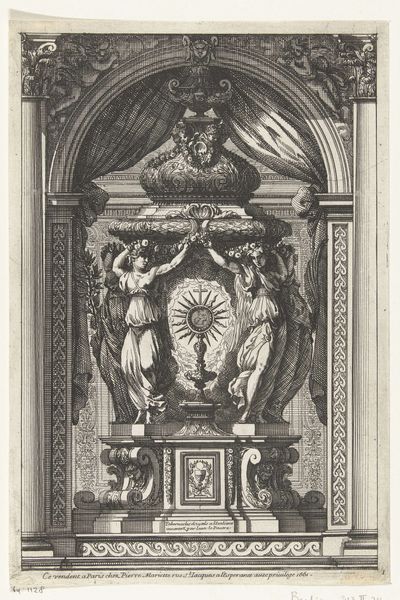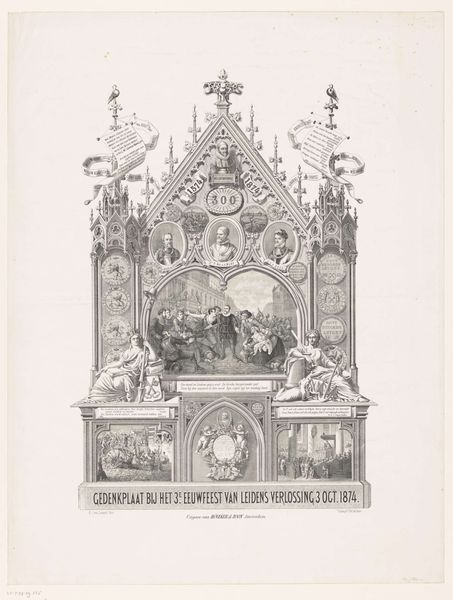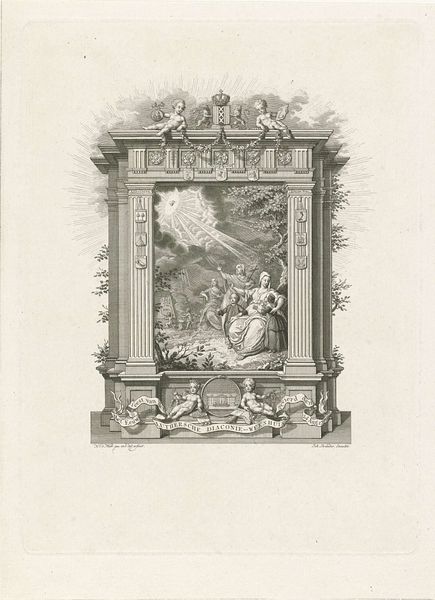
drawing, print, engraving
#
drawing
#
neoclacissism
# print
#
old engraving style
#
geometric
#
history-painting
#
engraving
Dimensions: height 588 mm, width 445 mm
Copyright: Rijks Museum: Open Domain
Curator: This engraving, created in 1818 by Pieter Hendrik Jonxis, commemorates the Synod of Dordrecht. Editor: My first impression is one of staged formality. The composition feels meticulously arranged, with a monument presented in a way that seems both grand and rigidly controlled. Curator: Indeed. As a print, made using engraving techniques, this work exists to commemorate a specific historical and political context. The Synod of Dordrecht was a pivotal event for the Dutch Reformed Church, solidifying doctrinal standards. Understanding this context helps decode its symbolism. Editor: The monumentality certainly evokes Neoclassical ideals of order and reason, yet the ethereal figures on clouds feel almost Baroque. How do you interpret these contrasting visual elements? Curator: They reflect a tension between divine authority and human governance. The figures allude to the theological implications, while the architectural monument emphasizes the institutional and social importance of the Synod. It's about the church embedding its own narrative. We also must not forget the historical framework the print was commissioned within, decades after this major assembly took place. It suggests the print operates as propaganda as well. Editor: I see what you mean. The geometric framework also reinforces the idea of an enduring, stable institution. Considering the work through semiotics, we see how its visual language speaks volumes about power and authority. The use of light in the engraving emphasizes this structure, creating stark contrasts between shadow and light that underscore the rigid hierarchy depicted. Curator: And thinking about materiality, engravings are easily reproducible, allowing the image, and therefore the ideas and agenda that the Synod wished to promote to circulate widely among the populace. The deliberate style ensured it appealed to a broad audience, becoming a powerful tool for shaping public memory. Editor: It's interesting how this print, seemingly static in its composition, really offers layers of meaning to dissect. From a formal reading alone, it reveals the intent to establish religious authority. Curator: It leaves us contemplating the role of such prints as cultural artifacts that not only depict events but actively shape their perception and lasting impact on Dutch society.
Comments
No comments
Be the first to comment and join the conversation on the ultimate creative platform.
